#actor aleksey kravchenko
Photo

Idi i smotri (1985)
#1980s#actor aleksey kravchenko#dir elem klimov#dp aleksey rodionov#cat melodrama#cat war#cat thriller#russian#soviet#belarusian#white#blue eyes#tears#dirt#blood#collar#child#snot#sfx makeup#idi i smotri#come and see#idi i smotri 1985#come and see 1985#kill hitler
19 notes
·
View notes
Text
Every time I see people highly praising the film "Come and See" as an anti-war masterpiece, I can't help but recall that its lead actor Aleksei Kravchenko enthusiastically supports russia's annexation of Crimea and has actively taken part in russian militaristic propaganda, including a movie filmed in the occupied Crimea that depicts Wagner mercenaries as heroes. The movie was co-sponsored by Prigozhin himself. (Wikipedia link for the movie, in russian).
That anti-war masterpiece movie means nothing to its own lead actor. Probably did mean a lot to its (Belarusian) writer, who had been an anti-Nazi resistance fighter during WW2 and wrote a lot of it from his own experience. But the lead actor's stance makes everything ring hollow still...
Just a short summary of russian art, I suppose.
46 notes
·
View notes
Text
"Come And See" defined in two words: nightmare fuel.
Director Elem Klimov planned to have lead actor Aleksey Kravchenko hypnotized by a psychotherapist during the most disturbing and violent scenes so that it wouldn't affect his young mind (14 years old at the start of production). However, he turned out not to be susceptible to hypnosis and ended up with psychological trauma.
"Come And See" (1985) Dir. Elem Klimov.
22 notes
·
View notes
Text

Sometimes we can be so exhausted that the only way we can try to tell our story is through someone else's art.
These are from the same film, "Come and See," and of the same character.
The actor is Aleksei Kravchenko, who was only 14 when he starred in the film.
It is the most disturbing film I have ever seen, but it describes and shows what trauma does to a person better than anything I've seen. My heart aches whenever I think about it and I have to stop what I'm doing.
Seeing such a raw painting of trauma and staring right into its eyes; it grips you forever. But if you've looked in the mirror and seen it on your own face, it's also a validating catharsis; being seen, finally.
(Image description: Two close-up shots of the actor's face, split down the middle and shown side by side. On the left side, he's youthful, he's smiling and glowing, with warm lighting. On the right side, everything is dark and muted, and he's staring ahead with pure horror, tears running down his face. His skin and hair are weathered, as if he has aged decades in less than a year.)
2 notes
·
View notes
Photo
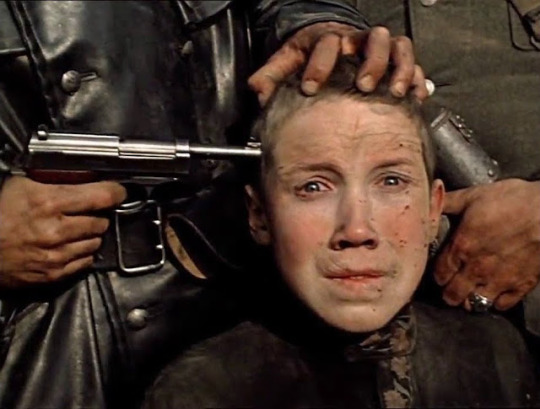
Aleksey Kravchenko in Come and See (Elem Klimov, 1985)
Cast: Aleksey Kravchenko, Olga Mironova, Ljubomiras Laucevicius, Vladas Bagdonas, Jüri Lumiste, Viktors Lorencs, Evgeniy Tilicheev. Screenplay: Ales Adamovich, Elem Klimov. Cinematography: Aleksey Rodionov. Production design: Viktor Petrov. Film editing: Valeriya Belova. Music: Oleg Yanchenko.
Elem Klimov's hard and harrowing Come and See runs a risk that it almost doesn't avoid: Parts of it are filled with such sustained horror and tension that a viewer can grow almost numb and dismissive. It elicits the response: "It's only a movie. These are actors." But such actors, especially Aleksey Kravchenko, then only 14 and picked by the director precisely for his lack of acting experience, even though Klimov was concerned that putting him through what the character must undergo in the film might be damaging to his mental health. (Kravchenko apparently survived intact, and went on to study acting and to build a steady career in film and television.) It's perhaps worth comparing the intensity of Klimov's film to that of Larisa Shepitko's The Ascent (1977), which put its actors through real hardships to create its portrait of life during wartime. Shepitko, married to Klimov, died in an automobile accident in 1979, and her film almost seems like a challenge to her husband to match or excel. In fact, Come and See seems to have exhausted Klimov as a filmmaker: He didn't make another film for the remainder of his life; he died at 70 in 2003. As harsh as the realism of Come and See is, it also has poetic touches in its cinematography and use of landscape, reminding me of another film about a war-torn boyhood, Andrei Tarkovsky's Ivan's Childhood (1966).
2 notes
·
View notes
Photo

CRITERION COLLECTION SPINE #1035: COME AND SEE (directed by Elem Klimov)
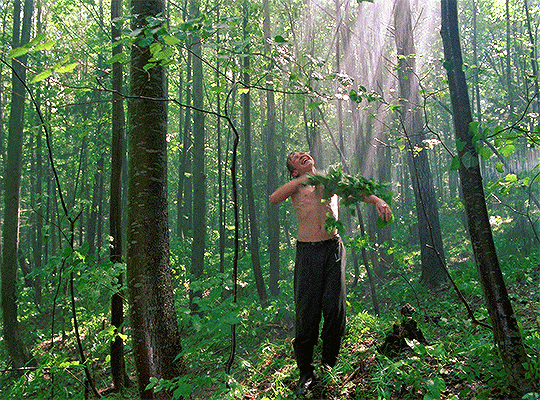


I don’t really know how to put in to words what I’m feeling or thinking after seeing this movie. I knew, going in, that it was going to be difficult and emotional - but even so, this was a profoundly moving and life changing experience that I couldn’t have anticipated or prepared for. Even now, I’m trying to compose my thoughts and write a semi-coherent review, but each time I stop and think of the movie I find myself in a rabbit hole of thought. Okay. Let me try and just get a little bit out of my brain here.
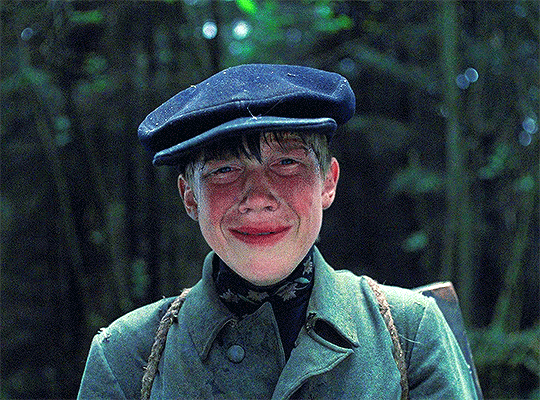


First of all, this has to be one of the best child performances I’ve ever seen. I looked it up, and Aleksey Kravchenko was 14 when this film started shooting. He’s able to convey such a wealth of emotions and as the film progresses and we see him experience horror after horror, there is no doubt in your mind that he is really going through all of this. You don’t see an actor, you see a boy standing in the middle of hell. In fact, nothing in this film seems fake or cinematic - it’s all presented so realistically and brutally. However that is not to say it isn’t cinematic. The cinematography and camera work are gorgeous, with many sequences feeling almost dreamlike. It’s Roger Deakins’ favorite film for a reason.



Without spoiling anything, the FIRE SEQUENCE is probably one of the most brutal scenes I’ve ever seen on film. It’s disgusting what The Nazi’s did to innocent villages. It truly made me think about the psychology behind Nazism and just how average, everyday citizens were able to get behind a regime like Hitler’s and commit acts of such atrocity. So evil. It truly baffles me. And to think that there are those in the US, like we saw in Charlottesville, that flew the Nazi flag and shouted Anti-Semitism from the streets. Absolutely and violently deplorable. My heart hurts after seeing this. It really does.

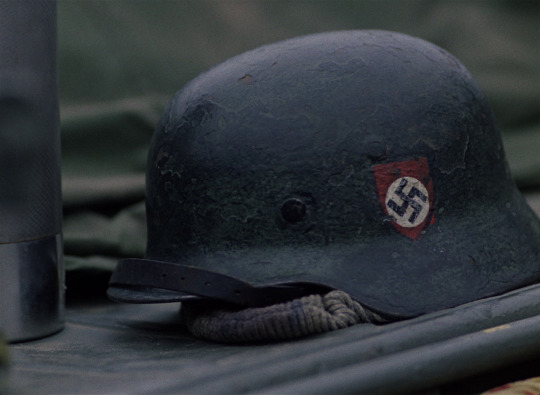
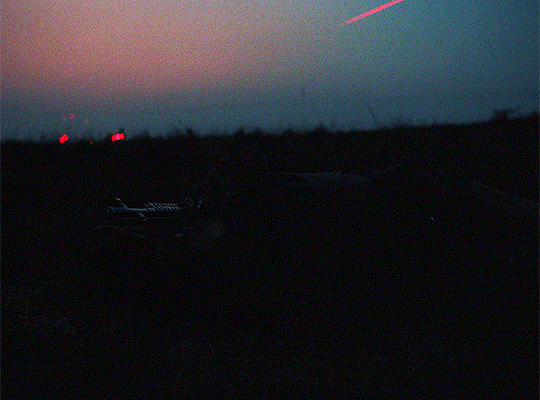
Also, the last five minutes or so are truly genius filmmaking. Again, I won’t spoil anything, but if you’ve seen the film you’ll know what I mean. The “historical rewind” sequence when the boy is shooting the picture of Hitler is like hypnotic and jaw dropping. And, it’s moments like these that crop up in the film elsewhere that truly make the movie stand high above the shoulders of other anti-war films, or just films in general. Elem Klimov is able to mix hyper-realism with surrealism and existentialism. It’s almost like watching a documentary on LSD, or waking up in the middle of a dream but still seeing the remnants of the dream in real life. Films like these are worthy of entering the ranks with other auteurs such as Bergman, Tarkovsky, and Kurosawa.
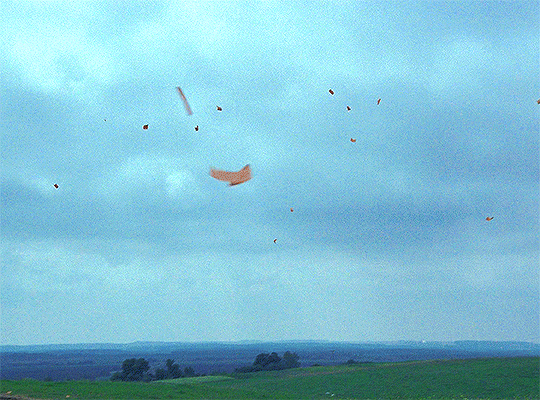

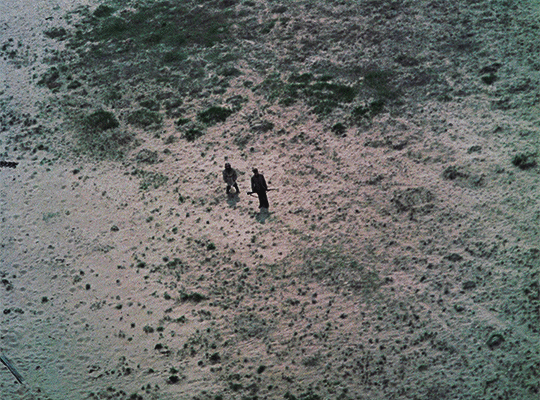
There’s so much more I could say. The brilliant use of Mozart’s Lacrimosa at the end, and what that means. The stork popping up throughout the film. The ending message of youth and children during wartime. It’s a very intellectual film if you dig deeper and deeper. But as Roger Deakins says in a wonderful interview, even if you disregard the intellectual messages of the film, it’s still just a horrifyingly powerful movie that leaves you with such a complexly solemn and bare feeling at the end. Watch this film. Reflect. Learn. History like I this must never, ever be allowed to repeat itself.


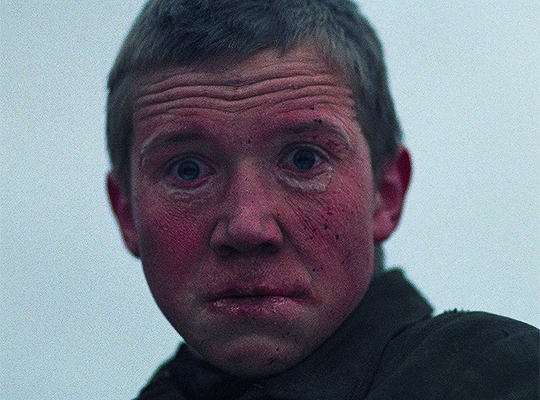
Find me on Letterboxd: https://letterboxd.com/michaelzak/
#film#movies#film review#movie review#the criterion collection#the criterion channel#criterion collection#criterion channel#come and see#idi i smotri#elem klimov#russian cinema#80's movies#World War Two#nazi#war cinema#best movies#greatest films
15 notes
·
View notes
Photo

Seeing is Believing.
The relentlessly hellish 1985 war film Come and See has marched to the number two spot on Letterboxd thanks to a stunning restoration, digital availability and pandemic-panic. Aaron Yap surveys the community’s reviews of Elem Klimov’s “mortar-blast of a masterpiece” for insights into its importance—and our psychic states.
War is hell—fundamentally the principle behind every anti-war movie, but there’s arguably never been one that conjures this state of being as convincingly as Elem Klimov’s 1985 Come and See (‘Idi i Smotri’) does. And it’s a hellscape that appears to be wildly resonating with the Letterboxd community—the film has now unseated The Godfather to take second place in our Official Top 250 Narrative Feature Films list, just behind Parasite.
For those yet to surrender to this mortar-blast of a masterpiece, Come and See plunges the viewer into the chaos and devastation of the 1943 Nazi invasion of Soviet Belorussia. Based on Klimov and writer Ales Adamovich’s own experiences during World War II, and the accounts of genocide survivors, it’s almost an anti-anti-war film. There are no professional actors. No battle scenes. No digestible history-pedia plot beats. No heroic feats of courage. Our guide into the harrowing void is a fourteen-year-old partisan adolescent named Florya (Aleksey Kravchenko).
Joining a troop of resistance fighters against his mother’s wishes, he embarks on an unnervingly subjective odyssey that leaves him a shrivelled, visibly aged husk by the end. It’s without question one of cinema’s most heart-breaking, unforgettable transformations.

Come and See is not a standard art picture per se. Klimov’s vision contains traces of Andrei Tarkovsky’s poetic, deep-dream sensibilities—many images assume otherworldly, psychedelic qualities that lodge in our mind and occasionally temper the pools of screaming despair around it. But the film is also as immediate as the lacerating scald of a flamethrower to the face. It possesses the grubby, cult-ish midnight-movie energy of something you should probably not be witnessing.
Awareness of the film’s infamous production lore—the plan to hypnotize Kravchenko, the use of live ammunition and real Nazi uniforms—only adds to the whole unshakeably surreal experience. Perhaps only Threads comes close to its singularly nightmarish, nearly unbearable grip.
While the film’s detractors point to a certain misery-porn obviousness (“a Disneyland dark-ride”, writes Nick), the majority of Letterboxd reviewers are unable to deny the sheer, overwhelming, scorched-earth impact of the film:
“It’s just so utterly fucking relentless.” —Andrew
“I am shaken to the core. Come and See is the only war film anyone needs to watch.” —Matt
“It is—through and through—a physical experience. It can be felt all the way to the bone. At a certain point it just stops being a movie, it leaves the screen and begs to become a part of you.” —Anna
“It’s no joyous or action-oriented trip of entertainment: it is authentic horror, flawlessly filmed. Be prepared.” —Edgar
“The most horrifying non-horror horror film of all time.” —Anton
In a more measured take, Mike D’Angelo questions the value of recreating this savage piece of history: “It’s undeniably powerful—so much so that it’s pretty much the sole memory I retained from my first viewing—but enduring it a second time made me more sympathetic toward the ‘some things are too monstrous to function as art’ camp than I’ve generally been in the past.”
Likewise, Robb struggled, preferring a more nuanced depiction: “I don’t want the easy release of thinking that there are strictly good and evil people. I want to know how all-in-all normal people, not monsters, commit monstrously heinous crimes. The alternatives, of just having throat-stomping scenes one after another, feels to me like an evening at the feelies.”
vimeo
To be clear, Come and See isn’t some underrated, recently unearthed discovery. It was released in the United States in 1987 and officially submitted as the Soviet entry into the Foreign Language Film category of the 58th Academy Awards. It’s been featured on Roger Ebert’s “Great Movies” series, and best-of lists from Empire and Sight & Sound magazines.
In Hollywood, the likes of Steven Soderbergh and Roger Deakins have been vocal in their praise of Klimov’s film. “What I saw will stay with me forever; it is a masterpiece not only of filmmaking, but of humanity itself,” Sean Penn once said. Films such as The Thin Red Line, Schindler’s List and Saving Private Ryan all owe a little something to Come and See in their respective cinematic representations of WWII.
But as we’ve seen in the recent surge of Studio Ghibli viewing—and with Soderbergh’s Contagion back in March—it’s sensible to hypothesize that the combination of increased media availability and a tumultuous socio-political atmosphere can contribute to the most dramatic of Letterboxd activity spikes.
Our data shows a clear correlation between Come and See diary entries and screenings of the stunning Janus Films 2K restoration that appeared in select theaters earlier this year—a big spike, in particular, after the screening at New York’s Film Forum on February 21. And Criterion Collection’s DVD, Blu-ray and digital release—a true revelation for those who’ve only ever watched the film via the 2003 Kino Lorber DVD—has positively pushed the film into the stratosphere, with a huge jump in numbers in late June, and holding steady ever since.

Given present circumstances—an out-of-control global pandemic with no discernible end in sight; Nazi sentiment and systemic racism still thriving in plain sight—Come and See’s petrifying apocalyptic wallop may not exactly be comfort viewing, but it does serve as a sobering, industrial-strength reminder that this is definitely not The Good Place and we should be concerned. As Lizzy asks in her ominous review, “What urges could turn men into such beasts?”
The film’s original title is the agreeably pointed Kill Hitler (“I think that’s beautiful” —Muriel). But its current beckoning, lifted from the Book of Revelation, is the more provocatively accessible invitation of the two: once you come and see, you can’t unsee Come and See.
Related content
100 Soviet Union Movies You Must See
Letterboxd Showdown: War Films
The films of Larisa Shepitko
You’re not the same person once the film has finished
Josh’s Complete Criterion Collection list
A list of Criterion DVD-only out-of-print films
A list of Criterion films on Blu-Ray
Films currently available on HBO Max from Janus Films
Follow Aaron Yap on Letterboxd
Images courtesy of the Criterion Collection.
#come and see#elem klimov#letterboxd#letterboxd top 250#letterboxd highest rated#war films#war movie#criterium#criterion channel#criterion collection#janus films#film restoration#kino lorber
13 notes
·
View notes
Text
Come and See (1985) Film Review
At this point, I believe it is incorrect to talk about great war films without mentioning Elem Klimov and his film Come and See (1985). It has to be one of the most realistic depictions of war ever made, and the incredible thing is that it is essentially an anti-war film. It's unusual to feel so involved in a film, and the film draws you in by delving into most aspects that war films don't communicate, and this is what distinguishes it from the others and makes it a must-see, as Roger Deacons stated.
Flyora, a 13-year-old girl, joins the Russian Soviet Forces to combat the German Nazis in the film Come and See. The voyage wasn't easy because we see him attempt to survive from the beginning, when their base is bombarded, and where he meets Glasha, who returns home with him and discovers practically everyone from his village is dead or hiding. Florya then goes insane as a result of the trauma and ends up fleeing with the other soldiers to battle, where he is imprisoned and sees a mass massacre of his people before being spared by a window opportunity.
The film's cinematographer, Aleksei Rodionov, should be commended for achieving immaculate compositions that are in deep focus and dwell on the characters for intensity of effect, the films compositions make you feel as if you have your own POV, as if you are in the film with Floyra and are also trying to make it out alive, especially in the Burning of the Church, where the camera moved in different places and was directed by the blocking of the actors.This showed everything that was happening from the arrival of the German Nazis with Florya running out of the cabin to when he was inside the Church and escapes through the window. The scene works incredibly well because a lot is happening, men are being shot, women are being harassed, kids are literally being thrown and to think that it was all intended helps us feel like it is organized chaos.
The film's performance is also a key factor in this feature film. We are represented by a young man named Aleksei Kravchenko, a Soviet and Russian actor who, by the way, was only 13 years old when he starred in the film as Florya Gaishun.Elem Klimov was willing to put his actors through a lot to achieve this, from putting them in mud to providing detailed explosions go off to having people climb on top of each other in confined areas just to get a compelling performance out of actors, This may seem like a lot of bother to go through, but based on the film's results, it was well worth it.Overall, the film is as authentic as they come, and the emotional plot combined with exquisite cinematography, engaging acting, and risk-driven emotions makes Come and See a picture that every filmmaker should see.
i Give This Film a 4.9/5.0
0 notes
Text

COME AND SEE (1985)
Against his mother’s wishes a young teenager by the name of Flyora joins the Belarusian resistance movement. Elem Klimov waited eight years before he got censorship to release the film from the Soviet authorities. The film runs for 142 minutes where we see young Flyora witness the Nazi party infiltrate and unleash suffering on the Eastern European people by , murdering them through shooting them , raping certain women in the group as well as burning most of them with Molotov cocktails. The 1985 film does a good job in depicting the nightmares that the Europeans went through on camera, almost leaving a bad taste of trauma in the viewer's mouth. There is a lot of emotion compacted into the long hours of the film and it is understandable why it received the FIPRESCI prize at the 14th Moscow international Film Festival. The film has great set design , amazing actors who deliver a stellar performance especially the protagonist Aleksei Kravchenko and it spares no modesty in its sound design which transcends the viewer into war ridden Europe.
The movie serves as a cinematic nightmare which delivers an experience which is almost traumatic. With research you can find the film on tier lists deeming it as a movie you can only view once due to the impact that the film has on the viewer. The main theme of the film may come off apocalyptic however it blends in themes of hyper realism , surrealism , philosophical existentialism with poetical, psychological, political themes as well. Released in the same year as Rambo we can see the difference in historical accuracy and impact that the two films have. Comeand see spares no punches and it isn’t shy to take you into the brutal history of war that was witnessed in world war 2.
0 notes
Text
Come and See (1985) Film Review
Come and see directed by Elem Klimov is one of the most essential war films ever made with an impactful narrative, striking visuals and a collection of metaphors. This film is not for the soft-hearted and is definitely a hard watch for anyone.
Aleksei Yevgenyevich Kravchenko performance was, dare I say, exceptional. His portral of Florya Gaishun, a as a young boy in the resistance army was nothing short of a master piece. Florya Gaishun struggles to retain faith and hope as he is exposed to the harsh realities of war. The viewers can easily identify what he is feeling on screen from his joy to his terror.
The camera movements and placements were very deliberate by giving the viewers more of the scene and setting surrounding the actors. The camera is successful with showing the events portrayed on screen as well as the mindset of Florya throughout those events. Colour and sound perfectly aided the visuals, however with this particular film it was the editing that was greatly noted, guiding the narrative smoothly as well as cutting to the overall scene to the characters expressions.
There was no CGI through this film which is almost jarring to know that the actors had very real close encounters with dangerous firearms and that most of what the viewers saw on screen were real. That being said it adds to the film being memorable for the right and wrong reasons as Aleksei Yevgenyevich Kravchenko was only 16, 1985’s human rights with regards to the film industry is very different to what they are now in 2021.
It isn’t the occasional gore that makes this film hard to watch, it isn’t the death and torture and it definitely isn’t the real danger the actors were put in. It is the reality of watching a young child like Florya, and knowing that any other child his age went through a similar or worse ordeal, from a hopeful boy to a numb soldier that will never be the same again. That is war and that is hard to watch.
0 notes
Text
Brief Review: Idi i Smotri (1985)
Rated the film 5 stars out of 5. Director/co-writer Elem Klimov creates a war film that’s consistently brutal in its plot as its images are striking (and occasionally beautiful). To have a teenage actor (Aleksey Kravchenko) endure several atrocities of war makes the subject matter that much more unforgettable as well as difficult to watch. Yet his portrayal of pain and suffering is extremely palpable with the various close-ups, Klimov and cinematographer Aleksey Rodionov finding the right level of colour desaturation to enhance his performance. They also use several wide shots and long shots to juxtapose the beauty of nature or the barren expanse of Russia against the actions onscreen. In perhaps a perfect microcosm of the film’s many brilliant aspects, an early shot details Kravchenko and Olga Mironova in an incredibly green forest enduring mortars, Mironova and a miniature rainbow capturing the all-too-brief splendour of the woods before they are further destroyed. Without spoiling any more of the plot, there are several more instances like this, both visually engaging and emotionally burdensome. Unsurprisingly, the film appears on several critically acclaimed lists, including the IMDb Top 250 list, the 1001 Films You Must See Before You Die list, the 101 War Films You Must See Before You Die list, and the Top 100 Russian Films list. Much like Schindler’s List (1993) and 12 Years a Slave (2013), however, this is a film that is difficult to recommend as needing to be watched more than once as that one time is an extremely difficult experience, but to highlight the historical atrocities that have taken place, this film is essential to watch that one, albeit immensely challenging, time.
https://www.imdb.com/title/tt0091251/
0 notes
Text
ALL CACOPHONOUS ON THE EASTERN FRONT - My Review of COME AND SEE (5 Stars)

ALL CACOPHONOUS ON THE EASTERN FRONT - My Review of COME AND SEE (5 Stars)We all have gaps in our moviegoing experiences. I’ve never seen It Happened One Night and only very recently did I watch It’s A Wonderful Life. In February, Janus Films released a 2K restoration of Come And See, a Soviet-era film from 1985 which depicts the horrors of World War II from a child’s perspective, but the onset of the global pandemic overshadowed it somewhat. In my self-isolation, I sought it out what has been called “one of the greatest war films ever made” and, after viewing it, felt compelled to write about this unforgettable masterpiece. Set in 1943 Nazi occupied Belorussia, the film follows a young man named Flyora (Aleksey Kravchenko, a non-actor at the time) who, upon finding a rifle amidst the rubble of a war torn village, joins up with a mostly civilian branch of the Soviet Army to fight the brutal invaders. We experience, almost in real time, every agonizing moment our protagonist suffers through. Its Director, Elem Klimov, who never made another film after this one, and Writer, Ales Adamovich both as children lived through many of the harrowing experiences depicted here. When Flyora first joins up, he leaves behind his young mother and two adorable twin sisters. The army assigns him menial tasks and leave him behind at camp when sent off to face the Nazis on the front. Soon Flyora meets Glasha (Olga Mironova), a young girl who’s attached to one of the leaders and has also been left behind. Their sweetly idyllic moments together end swiftly when the Nazis start bombing. Often throughout the film, Flyora will look up to the sky and see a portentous luftwaffe in the sky, seemingly tracking his every move. Flyora and Glasha quickly flee back to his village to check in on his family, and here is where everything changes in the blink of an eye. With nobody home, flies buzzing around half-eaten plates of food, and a kettle still warm on the stove, Flyora guesses they have fled to a secret hiding place. As they hurry there, Glasha looks back and sees something horrifying yet doesn’t reveal it to our young hero. This unforgettable moment sets the stage for the rest of this disorienting, nightmarish film. As Flyora wades through mud, dodges bullets whizzing over his head, and sees the worst in humanity, he seems to age decades before our eyes, despite the film taking place over a matter of days. This wholly immersive experience puts the viewer right in the middle of the chaos, yet Klimov’s filmmaking technique is so precise, so artful, that you never feel like you’re in the hands of a “point and shoot” filmmaker. Often, he has his characters stare directly into the camera, revealing their agonized souls. The fluid use of steadicam by his Cinematographer Aleksey Rodionov feels as accomplished as anything seen in Paths of Glory and it’s clear that 1917 wouldn’t have existed without this film. Roger Deakins, who won the Oscar for shooting last year’s incredible World War I story, has even called Come And See one of his favorite films. What truly sets this film apart, however, is its sound mix by Viktor Mors. He fills the soundtrack with a nonstop buzz of animal and insect noises, tortured screams of villagers, military marches, and more to create a wall of sound guaranteed to please generations of David Lynch fans. On top of this, we’re treated to operatic Soviet anthems. It took Klimov many years to get this film past the censors, who deemed it aesthetically dirty. It wasn’t until the onset of glasnost that he was basically given free rein to shoot the movie however he wanted. Of course, a film about the Nazis from a Russian point of view still props up the regime, but the grimy, gutted look and feel of the film remained true to Klimov’s original vision. Much like 1917, the film plays almost like a video game, with young Flyora bouncing from one challenge to the next. Luckily the similarities end there, due to Kravchenko’s fantastic performance and Klimov’s dedication to bringing the truth to the screen. While not particularly graphic, you feel every bit of Flyora’s inch by inch struggle to survive. You won’t soon forget the third act set piece in which the Nazi’s set about destroying an entire village and its inhabitants. Same goes for the last few minutes, which plays with time to show us the root of all evil. It’s a feat of editing and sound to rival some of the best sequences in film and leaves you breathless. It’s following by a memorable final shot, and this film is filled with them, as we watch a massive group of soldiers marching towards an unknown destiny. Come And See, like its title, urges you to not look away at man’s inhumanity towards man. It’s by no means a pleasant time at the movies, but it’s essential viewing nonetheless.
0 notes
Text
Seeing is believing.

Come and see (1985)
Director: Elem Klimov
Starring:
Aleksei Kravchenko
Olga Mironova
Drama, Historical
Introduction
Klimov has a strong reality piece for depicting a world that is not often spoken of in a time that commonly is. Following the harsh reality and perspective of a Russian boy living in the midst of world war two, followed by his mentality slipping and the challenges faced by his mind.
Plot Synopsis
In 1943, two boys dig up weapons on a beach and are told by their elder not to do so in fear of raising suspicion from German guards. Flyora, our protagonist joins the military and is tasked with normal chores for his service. The military laves him to do a patrol and he is left wandering around in search of his home with a woman. He returns home and finds a horrific sight and runs away in denial to search for his family. Soon finding his elder burned and telling him his consequences, leading him to search for the patrol again. He finds himself in a village that is attacked by Nazis that are tormenting and torturing the residents till they burn them alive. The patrol soon finds some of the arsonists and kills them. Flyora finds a man and shoots multiple times in anger with shots of Hitler traveling in reverse till he stops at the image of a infant Hitler and walks with his comrades in the forest.
Visual Elements
The film follows the perspective of the main character, who sees the war and tries to survive the strong events shown such as farm homes and huts being burned with their inhabitants still alive inside. And the character showing on his complexion, the damage done to him by the events by his face becoming more crumbled and damaged.
Conclusion
Klimov has a strong film here, showing the audience a brutal reality of events that had happened in the past. When we often read and hear those tragic events, they are shown to us, leaving a strong heartbreak and tragedy from the images. The actors give a strong performance, showing no fear in the role and choosing to take on challenging tasks such as submerging their heads in mud to drain the voices around him. The narrative cannot be emphasized onto how much it stands out to more modern films and is a historical masterpiece for the time.
I’ll give it an A+
0 notes
Text
Try not to cry through Come and see.
Try not to cry through Come and see.
Name of film: Come and see (1985)
Director: Elem Klimov
Starring: Aleksei Kravchenko and Olga Mironova
Genre: War drama
I do believe that this film portrays the circumstances during WWll very realistically. It is almost scary how the main character, played by Aleksei Kravchenko, ages dramatically throughout the film. Although this was just a movie, to me it felt more like a documentary. The style of the shots and also of the film itself appears very harsh and as if everything happened in the moment. Not like the shots were pre-planned, which they obviously were. As Elem Klimov, the director of this film, has lived through the World War, his perspective and way of telling the story was very real. I felt depressed after the film. The acting done by the two main characters where memorable. As they were asked to do very difficult scenes. They didn’t come forth as actors to me. They were kids who were trying to survive the war. The theme for this film, according to me, is how destructive war is on the earth and on everybody involved and that war is no way to resolve any matter. This film was worth screening. It’s eye-opening, especially for people who have little knowledge as to how brutal and serious the World War really was. We hear stories and see pictures, but here we have an entire film portraying the devastating times of World War ll.
The film follows a young boy, Florya (Aleksei Kravchenko) and his female companion Glasha (Olga Mironova) as they try and survive the difficult and harsh War. Their families are murdered and they need to try and stay away and out of sight of the German soldiers. They get separated and Florya ventures off with a group of rebels to try and find food and water. Florya experiences the brutality and inhumane nature of the German soldiers as they eradicate a village.
This film is unique in every way as it is not made for pleasure or enjoyment of the viewer. But rather a harsh reality check as to how broken the world was during the War. The film teaches the viewer to preserve and cherish life, as it can be easily taken away. The lighting of the film was very dull and almost had a humid feeling. There’s no sunshine. This is metaphoric for how dull and dead their circumstance where. The camera work was very shaky at most times. To give it that handheld feeling of someone taking these images as it’s happening. The set designs are incredible. And also, the number of extras in this film is what adds to the realness feeling.
This is not an easy film to watch, and is not for the fainthearted. But it’s a good film to see and I would recommend it. It opens your eyes and helps you to realise the importance and beauty of life and how we should cherish it. I give this film my stamp of approval with a thumbs up.
0 notes
Text
Rage (Skif)
Rage (Skif)
Actors: Aleksey Faddeev,Rustam Mosafir,Vitaly Kravchenko
Director: Rustam Mosafir
Country: russe
Genres: Action, Drame, Fantastique
Duration: 100
<p>Alors qu’une civilisation est en train d’en remplacer une autre, les Scythes ont quasiment tous disparu. Les quelques descendants restants s’affrontent entre eux. Lutobor, un vaillant guerrier, est impliqué dans un conflit fratricide et doit s’engager dans un périlleux périple pour sauver sa famille. Accompagné de Weasel, un prisonnier de la tribu ennemie, ils vont devoir mener cette quête ensemble. Bravant les terres sauvages, ils se dirigent vers le der...
source https://fcine.tv/rage-5000-streaming
0 notes